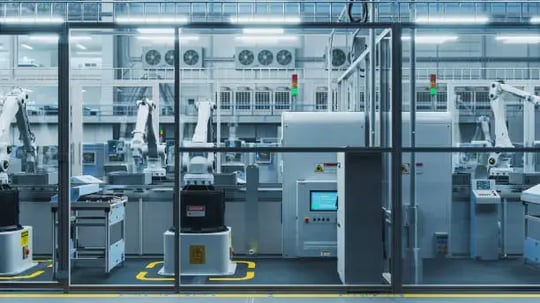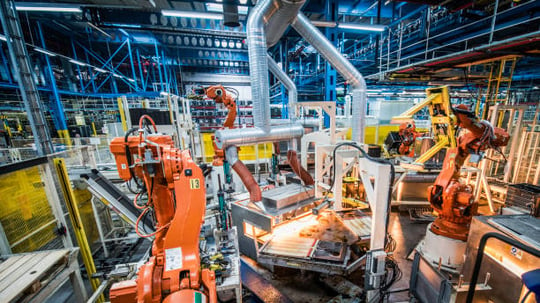
How PlanetTogether APS Supercharges Industrial Manufacturing Performance in the Age of Hyperautomation
Industrial manufacturing is undergoing a seismic shift in 2025. The age of automation is being superseded by hyperautomation—a strategy that blends artificial intelligence, machine learning, robotic process automation (RPA), and advanced analytics to automate everything that can be automated. For manufacturers, this means moving beyond siloed automation tools toward a connected, intelligent manufacturing ecosystem.
But in the push to automate workflows and reduce manual intervention, many manufacturers overlook the central nervous system of the operation—production scheduling and planning. That’s where Advanced Planning and Scheduling (APS) systems, like PlanetTogether, become essential.
When integrated with core platforms such as SAP, Oracle, Microsoft Dynamics, Kinaxis, or Aveva, PlanetTogether APS doesn't just support hyperautomation—it enables it.
This blog explores how APS integration is a critical accelerator for hyperautomation in industrial manufacturing, helping plant leaders achieve unprecedented performance gains.

What is Hyperautomation, and Why Does It Matter in 2025?
Hyperautomation is defined as the orchestrated use of multiple technologies, platforms, and tools—including AI, ML, IoT, and RPA—to rapidly identify, vet, and automate as many business and IT processes as possible.
In industrial manufacturing, hyperautomation is about more than installing robots on the production line. It’s about:
Using real-time data to make autonomous production decisions
Optimizing supply chain flows automatically
Detecting deviations and triggering corrective workflows instantly
Enhancing scheduling decisions without human intervention
According to Gartner, by 2025, 70% of organizations will have implemented some form of hyperautomation, with manufacturing leading the way due to its high process complexity and competitive pressures.
Yet, without a connected, intelligent scheduling core, hyperautomation fails to deliver its full potential. The missing link? APS systems like PlanetTogether.
Challenges Industrial Manufacturers Face Without APS Integration
Despite investing in automation tools, manufacturers often run into critical challenges:
Disconnected Systems
Automation across manufacturing execution, inventory, and procurement often remains fragmented without a centralized planning hub.
Static or Reactive Scheduling
Production schedules remain rigid, or worse, reactive to disruptions—undermining the value of real-time data coming from IoT or MES systems.
Limited Scenario Planning
Without APS, what-if analysis is labor-intensive and time-consuming, limiting agility during market volatility or demand shifts.
Underutilization of Resources
Labor, machines, and materials are often misaligned, causing delays, bottlenecks, or increased overheads.
Incomplete Feedback Loops
Hyperautomation thrives on feedback. Without integrated APS, scheduling decisions can’t respond dynamically to upstream and downstream shifts.

How PlanetTogether APS Accelerates Hyperautomation Performance
PlanetTogether APS stands out by connecting real-time data, predictive analytics, and intelligent scheduling logic to form the control tower of your hyperautomated ecosystem.
Let’s break down how it delivers performance in an industrial environment:
1. Centralized Real-Time Visibility
When integrated with ERP systems like SAP S/4HANA or Oracle Cloud, PlanetTogether aggregates data from across your plant—materials, labor, orders, and equipment availability—into one unified view.
This connected visibility is essential for hyperautomation to work, allowing:
Instant awareness of schedule deviations
Autonomous rescheduling triggered by predefined rules
Upstream changes (e.g., supplier delays) to cascade down to shop floor schedules
2. Predictive and Autonomous Scheduling
Hyperautomation depends on intelligence-driven decisions. PlanetTogether brings AI-powered scheduling that:
Continuously learns from past production patterns
Predicts bottlenecks before they occur
Automatically suggests optimal shift patterns and resource allocations
Through integrations with systems like Microsoft Dynamics 365 or Kinaxis RapidResponse, manufacturers can shift from "plan and wait" to "plan and optimize in motion".
3. Scenario Planning at Hyper Speed
With PlanetTogether’s powerful simulation engine, you can run what-if scenarios in minutes—not hours or days.
This enables hyperautomation to:
Evaluate multiple supply and demand scenarios instantly
Choose the most cost-effective or time-sensitive path
Trigger automated adjustments to sourcing, inventory levels, or production orders
Whether you’re responding to an unexpected order or a machine breakdown, PlanetTogether ensures decisions are proactive and aligned.
4. Seamless Integration with Automation Systems
PlanetTogether’s flexibility in integrating with MES, ERP, and IIoT platforms like Aveva, means it can sit at the center of a digital thread.
This allows:
Bi-directional data flow—orders, statuses, and disruptions are continuously exchanged
Real-time recalibration of plans based on machine utilization, operator shifts, or material constraints
Collaboration across departments through shared dashboards and alerts
5. Enhanced Performance KPIs
By combining hyperautomation with PlanetTogether APS, manufacturers report:
15–25% increase in machine utilization
20–30% reduction in lead times
Up to 99% on-time delivery rates
Significant reduction in planner intervention time
These aren’t just operational wins—they're strategic advantages in an increasingly automated and cost-sensitive market.

Action Plan – How to Enable Hyperautomation with APS
Want to start leveraging APS for hyperautomation? Here’s a practical roadmap:
Map Your Data Sources
Identify all the systems (ERP, MES, sensors, WMS) that generate operational data. Assess current integration gaps.
Integrate PlanetTogether APS
Deploy PlanetTogether APS and connect it with your primary ERP or MES platforms (SAP, Oracle, Microsoft, etc.)
Automate Low-Level Scheduling Tasks
Start by automating repeatable planning decisions like shift scheduling, order prioritization, and machine allocation.
Enable Predictive Scenarios
Use PlanetTogether’s AI engine to model best- and worst-case scenarios and validate them against real production data.
Expand to Closed-Loop Automation
Tie APS outputs directly into automated shop floor actions—rescheduling machines, adjusting material delivery, or triggering alerts.
Hyperautomation is more than a buzzword—it’s the new foundation of competitive industrial manufacturing. But automation without intelligent coordination leads to chaos, not efficiency.
PlanetTogether APS delivers the dynamic scheduling, predictive optimization, and real-time orchestration needed to unlock the full power of hyperautomation. When integrated with platforms like SAP, Oracle, Microsoft, Kinaxis, or Aveva, it acts as the digital command center for the modern factory—elevating performance, reducing waste, and increasing delivery precision.
In 2025, performance belongs to those who can plan, schedule, and optimize at machine speed.
Are you ready to futureproof your factory? Contact us today to learn more about how PlanetTogether can help you achieve your goals and drive success in your industry.



